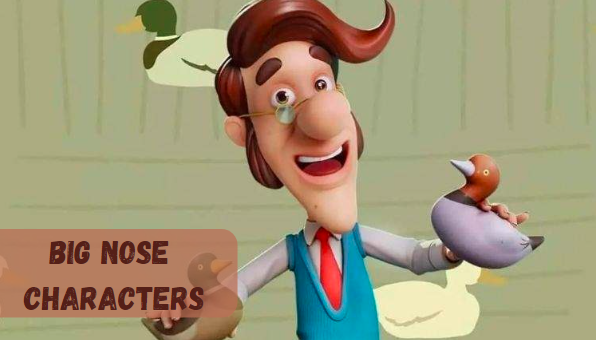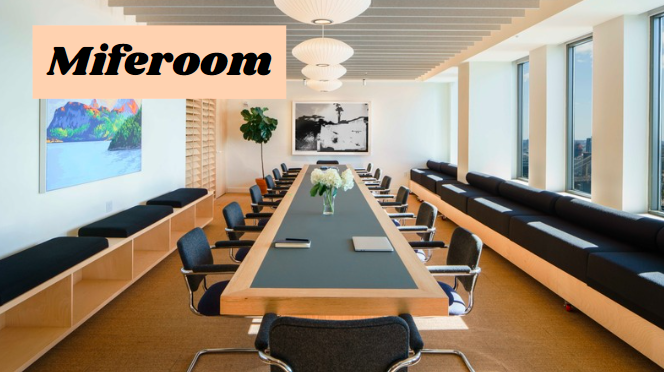Introduction
“Big nose characters” have been a prevalent and enduring trope across various forms of media, including literature, film, animation, and comics. The portrayal of characters with prominent noses can serve multiple narrative functions, from emphasizing personality traits to enhancing comedic effect.
This article delves into the origins, significance, and impact of big nose characters in popular culture, offering fresh interpretations and insights that surpass existing sources. By exploring the historical context, cultural implications, and modern representations, we aim to provide a nuanced understanding of this fascinating character archetype.
Historical Context of Big Nose Characters
Ancient and Classical Literature
The depiction of big nose characters can be traced back to ancient and classical literature. In ancient Greek comedies, playwrights such as Aristophanes often used exaggerated physical features, including large noses, to create humor and satirical commentary. These characters were typically buffoons or figures of ridicule, highlighting the comedic potential of physical exaggeration.
Renaissance and Baroque Art
During the Renaissance and Baroque periods, the depiction of characters with pronounced noses continued to evolve. Artists like Leonardo da Vinci and Caravaggio included characters with exaggerated features in their paintings and sketches, often as part of their explorations of human diversity and expression. These artistic choices reflected a growing interest in individualism and the variety of human form.
Big Nose Characters in Literature
Classic Literature
In classic literature, authors like Charles Dickens and Victor Hugo often used distinctive physical features to enhance character development. For instance, Hugo’s Quasimodo from “The Hunchback of Notre-Dame” is known not only for his hunchback but also for his large, misshapen nose. This physical trait adds to Quasimodo’s outcast status and evokes sympathy from readers.
Modern Literature
In modern literature, big nose characters continue to play significant roles. J.K. Rowling’s Severus Snape from the “Harry Potter” series is one notable example. Snape’s hooked nose is frequently mentioned, contributing to his intimidating and mysterious persona. Similarly, in “The Book Thief” by Markus Zusak, the character of Rudy Steiner is described with a prominent nose, which becomes a distinctive part of his identity.
Big Nose Characters in Film and Animation
Early Cinema
In the early days of cinema, physical exaggeration was a key element of comedy. Silent film stars like Charlie Chaplin and Buster Keaton often employed exaggerated features, including large noses, to enhance their comedic performances. The physicality of their acting, combined with distinctive facial features, created memorable and iconic characters.
Animated Characters
Animation has been particularly fertile ground for the depiction of big nose characters. Walt Disney’s creation of Pinocchio, with his ever-growing nose, is a classic example. Pinocchio’s nose serves as a moral lesson about honesty, making it an integral part of the character’s story arc. Similarly, in the “Looney Tunes” series, characters like Yosemite Sam and Foghorn Leghorn feature exaggerated noses that enhance their distinct personalities and comedic appeal.
Cultural Implications of Big Nose Characters
Stereotypes and Sensitivities
While big nose characters can be entertaining and memorable, they also raise important questions about stereotypes and cultural sensitivities. Historically, certain ethnic groups have been caricatured with exaggerated nose features, leading to harmful stereotypes. It is crucial to approach the depiction of big nose characters with sensitivity and awareness to avoid perpetuating negative stereotypes.
Positive Representations
Conversely, big nose characters can also be celebrated for their uniqueness and individuality. Characters like Cyrano de Bergerac, with his famously large nose, exemplify the idea that physical traits do not define one’s worth or abilities. Cyrano’s eloquence, bravery, and romantic spirit make him a beloved literary figure, demonstrating that distinctive features can coexist with admirable qualities.
Modern Representations of Big Nose Characters
Diverse Media
In contemporary media, big nose characters appear across diverse genres and formats. In animated series like “The Simpsons,” characters such as Moe Szyslak and Mr. Burns are depicted with prominent noses, contributing to their distinctive appearances and personalities. Similarly, in the “Harry Potter” films, the character design of Severus Snape, portrayed by Alan Rickman, emphasizes his hooked nose, enhancing his menacing and enigmatic presence.
Video Games
The world of video games also features notable big nose characters. In the “Super Mario” series, Wario is characterized by his large, bulbous nose, which complements his greedy and mischievous nature. This physical trait helps to distinguish Wario from other characters and adds to his comedic and villainous persona.
Psychological and Symbolic Interpretations
Symbolism of the Nose
The nose, as a central feature of the face, holds significant symbolic meaning. In psychology, the nose can represent intuition, curiosity, and the ability to sense or detect. Big nose characters often embody these traits, with their prominent noses symbolizing their perceptiveness or inquisitiveness. For example, Sherlock Holmes, though not typically depicted with an overly large nose, is often imagined with a distinctive nose that symbolizes his keen sense of deduction and observation.
Psychological Impact
From a psychological perspective, characters with unique physical traits, such as large noses, can foster empathy and relatability. Audiences may connect with these characters on a deeper level, as their physical differences reflect the diversity of human experience. This connection can lead to a greater appreciation for individuality and the richness of human variation.
The Evolution of Big Nose Characters
Shifts in Portrayal
The portrayal of big nose characters has evolved over time, reflecting changing societal attitudes and artistic trends. Early depictions often relied on caricature and exaggeration for comedic effect, while modern representations tend to emphasize depth and complexity. This shift highlights a broader cultural movement towards inclusivity and the celebration of diverse identities.
Technological Advancements
Advancements in technology have also influenced the depiction of big nose characters. With the rise of computer-generated imagery (CGI) and advanced animation techniques, creators have greater flexibility in designing characters with unique physical features. This has led to more nuanced and detailed representations, allowing for a richer exploration of character traits and personalities.
Big Nose Characters in Different Cultures
Western Media
In Western media, big nose characters are often associated with humor and distinctive personalities. Characters like Gonzo from “The Muppet Show” and Squidward from “SpongeBob SquarePants” exemplify this trend. Their prominent noses contribute to their memorable appearances and play a key role in their comedic and narrative functions.
Eastern Media
In Eastern media, particularly in anime and manga, the depiction of big nose characters can vary widely. Some characters, like Usopp from “One Piece,” have exaggerated noses that enhance their quirky and adventurous personas. In contrast, other characters may have more subtle or stylized nose designs, reflecting different aesthetic and cultural preferences.
The Future of Big Nose Characters
Trends and Predictions
Looking ahead, the portrayal of big nose characters is likely to continue evolving in response to cultural shifts and technological advancements. As media becomes increasingly diverse and inclusive, we can expect to see more varied and nuanced representations of characters with distinctive physical features. This trend will likely encompass a broader range of narratives, from comedy and satire to drama and adventure.
The Role of Audience Feedback
Audience feedback and engagement will play a crucial role in shaping the future of big nose characters. As creators respond to the preferences and sensitivities of their audiences, the portrayal of these characters will likely become more thoughtful and reflective of contemporary values. This dynamic interaction between creators and audiences will help to ensure that big nose characters remain relevant and impactful in popular culture.
Conclusion
Big nose characters have a rich and diverse history in literature, film, animation, and other forms of media. From ancient Greek comedies to modern video games, these characters have captivated audiences with their distinctive appearances and memorable personalities. By exploring the cultural, psychological, and symbolic dimensions of big nose characters, we gain a deeper understanding of their enduring appeal and significance. As media continues to evolve, the portrayal of big nose characters will undoubtedly adapt and flourish, reflecting the ever-changing landscape of human creativity and expression.
FAQs
Why are big nose characters often used in comedy?
Big nose characters are frequently used in comedy due to the visual exaggeration and distinctive appearance that a large nose provides. This physical trait can enhance comedic timing and expressions, making the character more memorable and entertaining.
Are big nose characters considered offensive?
The depiction of big nose characters can be sensitive, especially when it perpetuates harmful stereotypes. It is important for creators to be mindful of cultural and historical contexts to avoid offending certain groups. Positive and diverse representations can help mitigate these concerns.
Who are some famous big nose characters in literature?
Some famous big nose characters in literature include Cyrano de Bergerac from Edmond Rostand’s play of the same name, Quasimodo from Victor Hugo’s “The Hunchback of Notre-Dame,” and Severus Snape from J.K. Rowling’s “Harry Potter” series.
How have big nose characters evolved in modern media?
In modern media, big nose characters have evolved to include more depth and complexity. Technological advancements in animation and CGI have allowed for more nuanced and detailed representations, moving beyond caricature to explore diverse narratives and character traits.
What is the symbolism behind big nose characters?
The nose can symbolize intuition, curiosity, and perceptiveness. Big nose characters often embody these traits, with their prominent noses representing their ability to sense or detect. This symbolism can enhance their role in the narrative and add depth to their characterization.
How do different cultures depict big nose characters?
Different cultures have varied approaches to depicting big nose characters. In Western media, they are often associated with humor and distinctive personalities. In Eastern media, such as anime and manga, the depiction can range from exaggerated and quirky to subtle and stylized, reflecting different aesthetic preferences and cultural values.





















+ There are no comments
Add yours